The Ohio and Erie canal carried freight traffic from 1827 to 1861. From 1862 to 1913, the canal served as a water source for industries and towns. During 1913, much of the canal system was abandoned after flooded severely damaged key section.
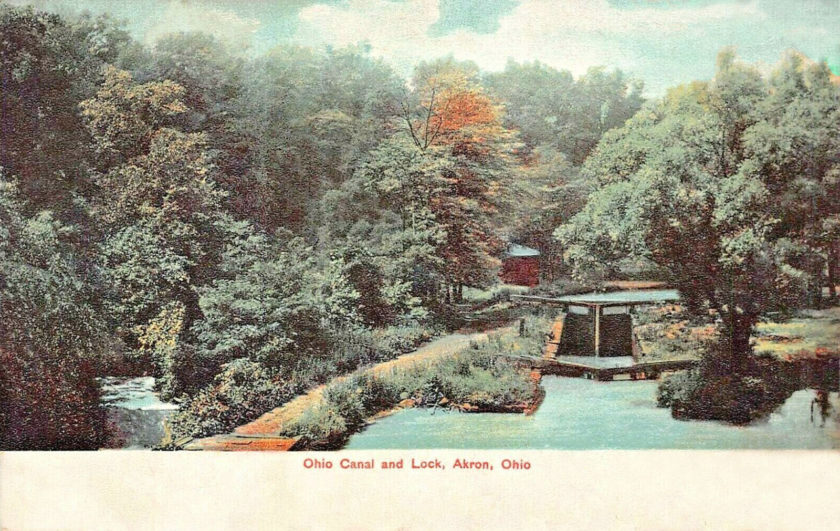

The Ohio and Erie canal carried freight traffic from 1827 to 1861. From 1862 to 1913, the canal served as a water source for industries and towns. During 1913, much of the canal system was abandoned after flooded severely damaged key section.

Buick dealership opened in 1948.

A streetcar is seen ascending the Mill Street Viaduct as it leaves downtown headed over the city’s main rail lines. At the right can be seen the Cleveland Akron & Columbus freight shed.

From 1891 through 1950, Akron’s Union Station was an important busy part of the city’s growth. The railroad station served passengers on trains from the Baltimore & Ohio (B&O), Pennsylvania and Erie railroads. In 1950, the railroad station was replaced by the new Akron Union Depot.

Although grand in appearance, Akron’s Union Station was not a centerpiece of pride for Akronites. Many visitors complained that the railroad station was too cold in the winter, too hot in the summer, dirty, and small. Despite the complaints, the station lasted nearly 60 years before being replaced by the more modern Union Depot.

The Ohio & Erie Canal carried freight traffic from 1827 to 1861, when the construction of railroads ended demand. The canal served as a water source for industries and towns until around 1913 when much of the canal system was abandoned/destroyed due to major flood damage.

Akron’s rapid population growth of the early 1900s put a strain on the city’s Union Station – built in 1891. Additions were made to enlarge the station, but they weren’t enough. In 1950 the building was replaced by a much larger and considerably more modern Union Depot.

Built before the rubber boom, Akron’s Union Station quickly showed its inadequacies as the city’s population exploded. Although additions were made, the station was never large enough to handle the popularity of Akron. In 1950 a new Union Depot was built to replace the aging structure and by 1951 it had been demolished.
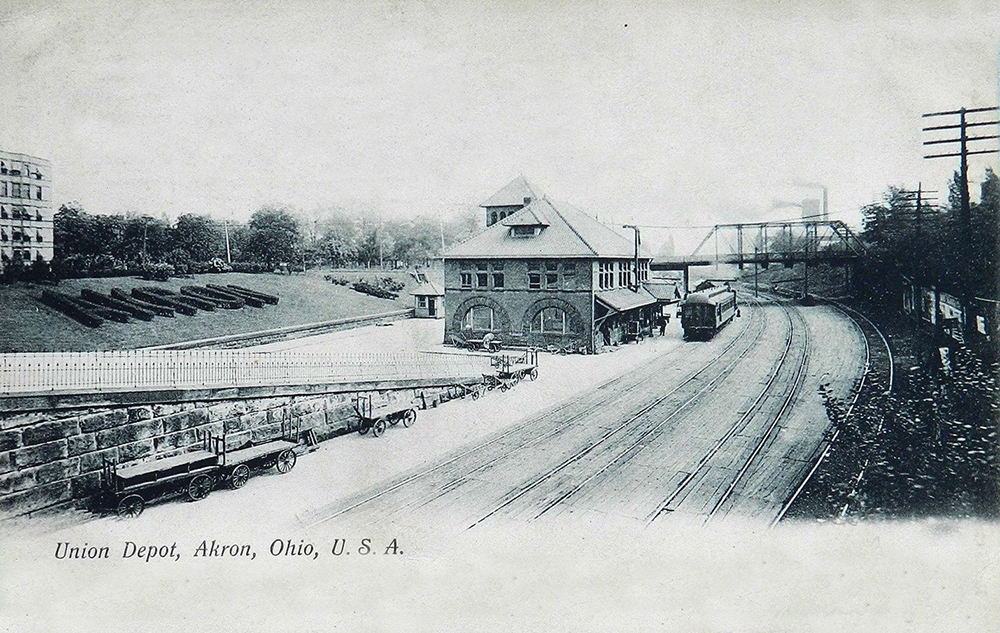
This was Akron’s second Union station. Although an attractive structure, Akronites didn’t have much love for this railroad station. Many complained about it being too small, too dirty, too hot in the summer, and too cold in the winter. Built in 1891, it was replaced and demolished in 1950.

Designed by Howard, Harrington & Ash of Kansas City, this 2,810-foot span opened in 1922, with a grand parade that attracted 150,000 spectators. In 1978, a little more than 50 years after its completion, the bridge was demolished and replaced by the “All-America Y-Bridge.

Lower and Higher Bridges over the Cuyahoga River. The Lower Bridge, at Gorge, was 100 feet long by 50 feet wide and made of wood with iron supports. The Higher Bridge was 375 feet long by 101 feet high. It was erected in 1904 at a cost of $70,000. Although primarily used for electric cars,…
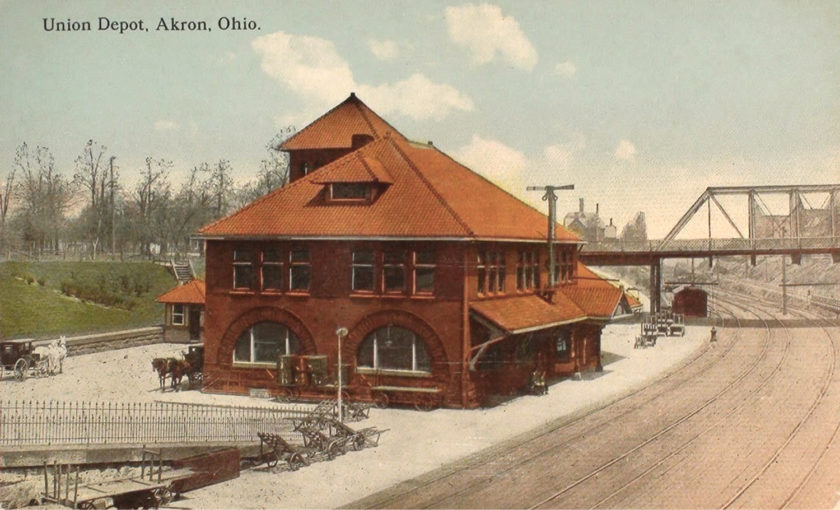
Akron’s second Union Station was constructed in 1891 and had several addition made before being demolished in 1951. The facility was located in Akron’s downtown between East Market Street and Park Street. Akron’s Union Station served three major railroads including the Baltimore & Ohio railroad, the Cleveland Akron & Columbus railroad (Pennsylvania Railroad), and the…

As the US Navy’s newly built USS Akron flys overhead, the Akron Municipal Airport and its distinctive architecture stand proudly below in this vintage Akron Postcard. Opening in 1929, the Akron Municipal Airport at one point was a U.S. naval air station, known as Naval Air Station Akron. Today the airport is known as the…

In 1942, one of the area’s worst aviation accidents occurred when a Martin B-26B Marauder crashed shortly after takeoff. The plane was on a routine training mission during World War II when it stopped off at Akron (Terminal) Municipal Airport to refuel. During takeoff, a faulty rubber seal lead to engine failure causing the plane to crash into…

Amelia Flats was the first of two apartment building constructed by businessman Horace B. Camp (1838-1907). The flats were built as upscale suites in a neighborhood well known for its affluent residents – Barber, Buchtel, Bierce, Firestone, Hower, Seiberling and Schumacher.

With a train in the background a sunken canal boat in the foreground, and the prominent Northern Ohio Railway bridge towering over the scene, this historic postcard image gives a glimpse into Akron, Ohio’s transportation history.

The city’s second Union Station was built in 1891 and demolished in 1951. It was located between East Market and Park streets. This station served the Baltimore & Ohio (B&O), Cleveland Akron & Columbus (CA&C) and the Erie Railroads. It was replaced by Union Depot.

A US Navy Corsair Fighter, built by Goodyear Aircraft flies over the Rubber Bowl Stadium. Goodyear Aircraft produced more than 4,000 Corsair fighter planes. During the height of production, it was common for Akronites to see these “warbirds” flying above the city.
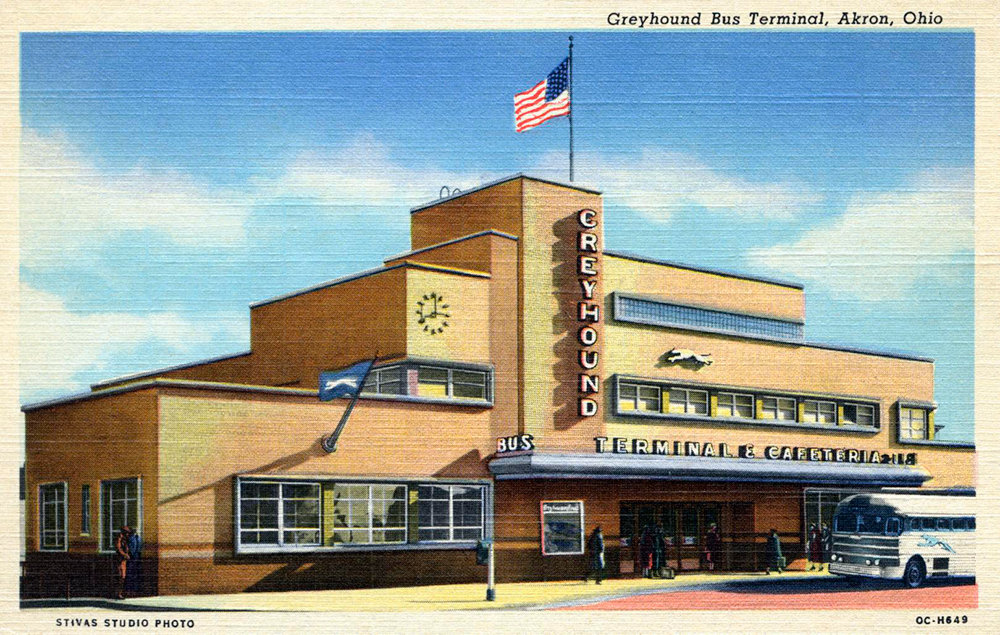
The Greyhound Bus Terminal in Akron was built at a cost of $600,000. It afforded patrons all the expected modern conveniences including a cafeteria. Up to fourteen busses could be docked simultaneously at the terminal. The building was connected to the Union Railroad Depot via an enclosed skywalk. It was also just one block from the…

The lower bridge was built in 1895, while the upper double-track streetcar bridge was built in 1903. Both bridges spanned the Gorge between Akron and Cuyahoga Falls, located near the road that is now Front Street, north of Cuyahoga Falls Avenue.

Interurban cars are lined up outside the Hamilton Building on South Main Street. It’s another busy day in Akron.

Amelia flats was a five-story apartment building, which stood on Park Street across from picturesque Grace Park, it was one of the city’s earliest apartment houses when opened in 1901.
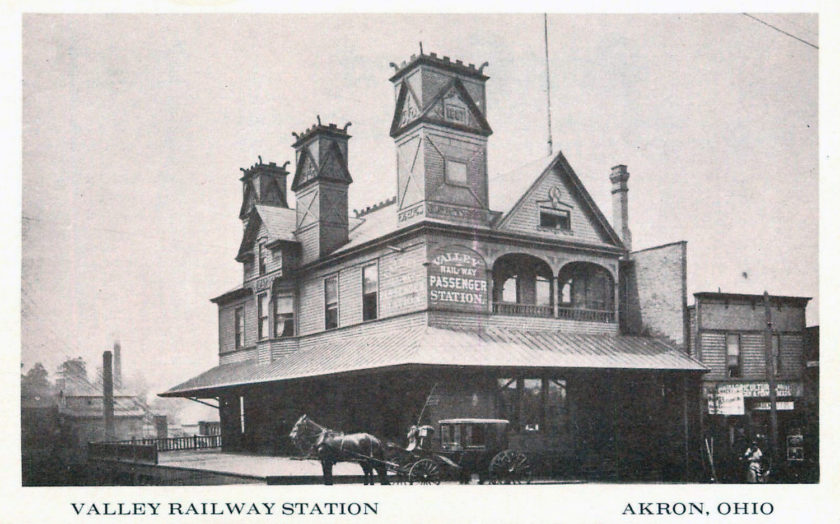
This ornate railway passenger station, built in 1888, was located on the corner of West Market Street and South Canal Street. The station was built to relocate passenger service from the railroad’s less convenient station at North Howard and Ridge Streets. The Valley Railway reached from Cleveland to Akron via the Cuyahoga Valley and then south to Valley Junction…

Mills of the Quaker Oats Co. can be seen in the background of this postcard. The former CA&C/Railway Express Agency station is in the foreground. A railroad boxcar is being loaded on the team track at the right of the image. The image was taken from the mill street bridge over the city’s main railroad lines.
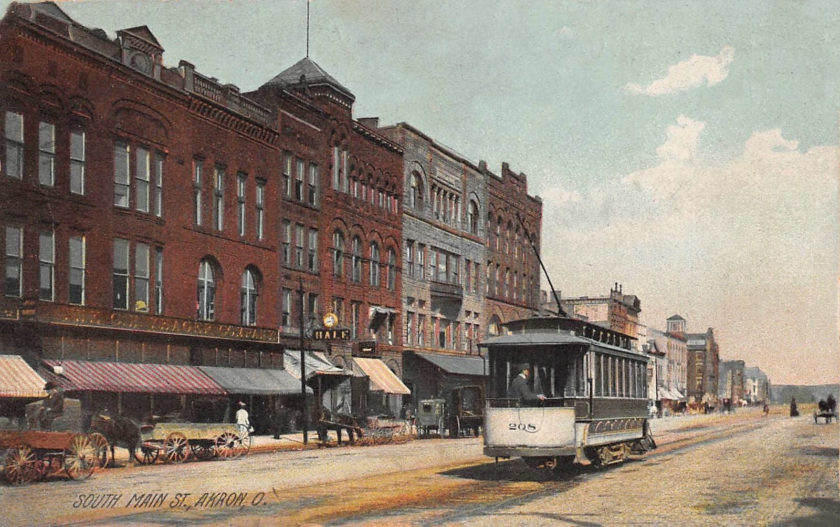
A quiet afternoon on Akron’s South Main Street. As trolley #208 works it’s way through the streets.